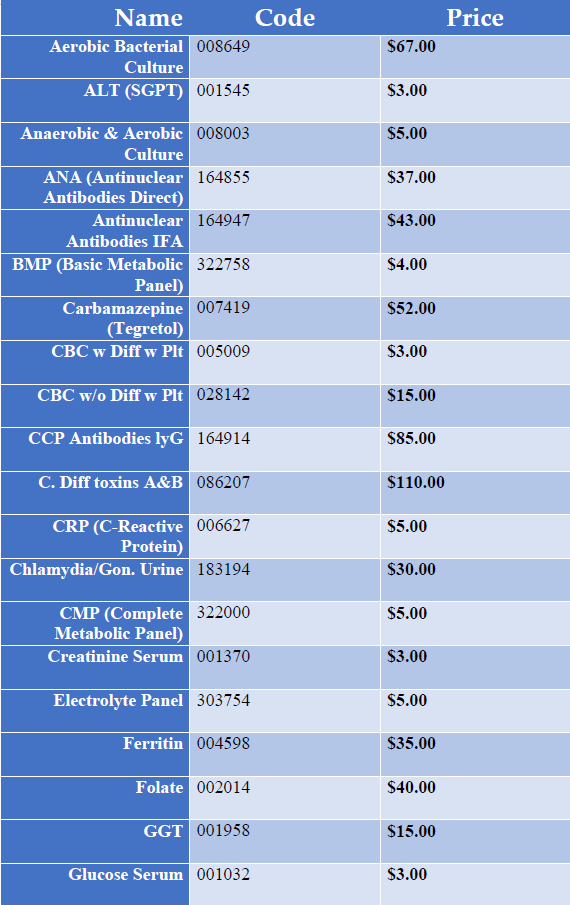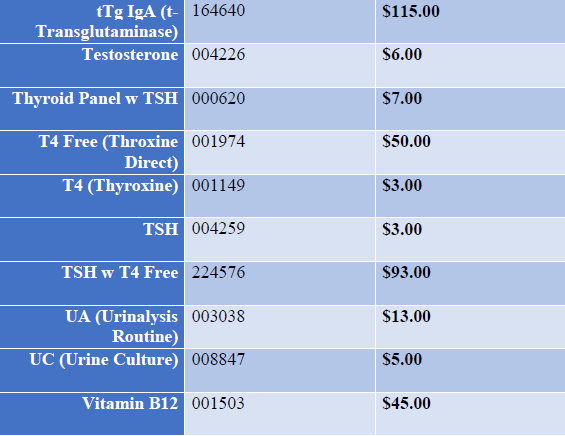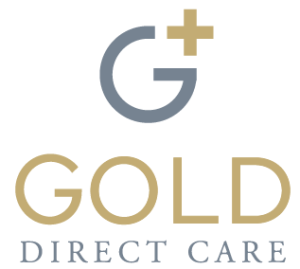Because DPC is known for it’s price transparency, this is a list of our most common labs and their prices. If you don’t see a test on here which you would like to know the price of, don’t hesitate to send Meghann an email at Meghann@golddirectcare.com.
Category: Resources
Now Supplying Vaccines To Kids Under 19 Years!
So after battling with the state of Massachusetts since February, we finally got the okay to supply State Vaccines. The vaccines which we can supply are:
- DTaP (Helps children develop immunity to three deadly diseases caused by bacteria: diphtheria, tetanus, and whooping cough aka pertussis.)
- Hep A (Used for prevention of liver disease caused by the hepatitis A virus.)
- Hep B (Used for prevention of liver disease caused by the hepatitis B virus.)
- HIB (Used for prevention of invasive disease caused by Haemophilus influenzae type b bacteria.)
- IPV (Used to combat poliomyelitis aka Polio.)
- PCV13 (Used to protect infants and toddlers from pneumococcal disease.)
- RV (Oral Dosage- Used to prevent Rotavirus which is a contagious virus that can cause gastroenteritis.)
These vaccines can be supplied to anyone under the age of 19. However, we will not be supplying HPV or Menactra(Meningococcal Meningitis Vaccine). We do have places we can send our patients to receive these vaccines at a cash price, or by using their insurance.
We will be implementing a $20 inoculation fee to help pay for the needles and syringes. This is just a one time fee per visit, NOT per vaccination.
If you have any questions, or would like to set up an appointment, please call our office at 781-842-3961.
If you would like to know more about the vaccines, or what schedule your child should be on, you can visit the CDC website here.
Our Partnership With RubiconMD
![]() Have you ever been frustrated as a patient with the time it takes to see a specialist? ….The cost of seeing a specialist? Or maybe you are frustrated that your primary care doc refers out many of your medical issues without taking enough time to get to the root of them? Having worked in the insurance-based system for ten years, I can honestly tell you that many of the referrals I made were medically unnecessary. Although I hate admitting this, it is a fact. Required to see 20-25 patients a day for 15 minutes at a time (if lucky), I did not have adequate time to think and/or treat even if it was an issue that was in my scope of care. This is one major reason I switched to a Direct Primary Care practice. I wanted more time with my patients to think, to treat, and as a result decrease the number of specialty referrals I make. And when you eliminate the restrictions of third-party payment many other great opportunities open up to you- both as a patient and a physician. One of the incredible services that I offer to my patients is called RubiconMD.
Have you ever been frustrated as a patient with the time it takes to see a specialist? ….The cost of seeing a specialist? Or maybe you are frustrated that your primary care doc refers out many of your medical issues without taking enough time to get to the root of them? Having worked in the insurance-based system for ten years, I can honestly tell you that many of the referrals I made were medically unnecessary. Although I hate admitting this, it is a fact. Required to see 20-25 patients a day for 15 minutes at a time (if lucky), I did not have adequate time to think and/or treat even if it was an issue that was in my scope of care. This is one major reason I switched to a Direct Primary Care practice. I wanted more time with my patients to think, to treat, and as a result decrease the number of specialty referrals I make. And when you eliminate the restrictions of third-party payment many other great opportunities open up to you- both as a patient and a physician. One of the incredible services that I offer to my patients is called RubiconMD.
RubiconMD is a company built for Direct Primary Care practices, but in my opinion it could also be used effectively by any primary care practice. They have created a network of specialists from all fields of medicine from some of the top hospitals in the nation. For a very affordable monthly fee that I pay them (with no extra cost to patients), I have access to online consults with any of these specialists. You have a rash that I can’t figure out? I can send pictures to them and get a response from a dermatologist in less than 24 hours. You have concerns about a complicated insulin regimen? I can email an endocrinologist for unbiased medical advice. All communications are secure, and all-in-all it is an amazing tool that saves time and money and facilitates much better medical care and patient satisfaction. It is one of the many great services we offer at our Direct Primary Care practice.
Why the Direct Pay Model would work well for the poor population.
One of the ideas which people perceive about Direct Primary Care is it’s only affordable for wealthier incomes. This article, which was well written by Marguerite Duane, MD, MHA, debunks the reasoning behind it. The link to the original article can be found at the bottom of the page.
So, if poor people have little to spend, why would the direct primary care model work for them? Simple; with direct pay models the actual health care costs can be kept much lower and therefore more affordable for these very patients. Plus, since direct pay models often have smaller patient panels, these patients may have more time with their physicians and staff to address the myriad of issues in their life that may be affecting their health.
Some direct pay models charge patients a monthly or yearly membership fee that covers all primary care office visits and even some basic or in-house labs. For example, at Qliance in Seattle, depending on the patients’ age, members pay a fee that ranges between $54 – $94 a month, which includes:
- 7 -day a week access to the Qliance health care team
- Same or next-day appointments for urgent care
- 30-60 minute office visits
- Phone appointments and e-visits
- After hour phone access to a physician for urgent medical needs
Sure, direct primary care is great because it covers all primary care visits, but you may wonder how will poor patients pay for labs or specialty visits? It may surprise you to learn that the actual cost of most basic labs is actually very little. We negotiated with local labs to pay just above the actual cost of the tests and in exchange, we pay our lab bill in full monthly. Here is an example of how it would work for a patient with diabetes:
Labs Actual Cost Patient Paid at time of visit
- HgAIC $8.72 $10
- Lipid panel $3.47 $ 5
- CMP $4.21 $ 5
What about the cost of specialty care, clearly this is much too expensive for poor people to afford, right? My response to that question is two-fold:
First, one of the main benefits of the direct primary care model is physicians have more time to spend with their patients to actually figure out what is wrong and treat problems appropriately; and therefore, they need to refer patients less often. As family physicians, I believe we are well trained to handle the myriad of problems that patients may present with, but we do not have enough time to adequately address them in a 10 minute office visit, so we often feel compelled to refer them to specialists. QIiance has demonstrated that when you have the time to spend with patient, specialist and ER visits, surgeries and hospitalizations are all significantly reduced
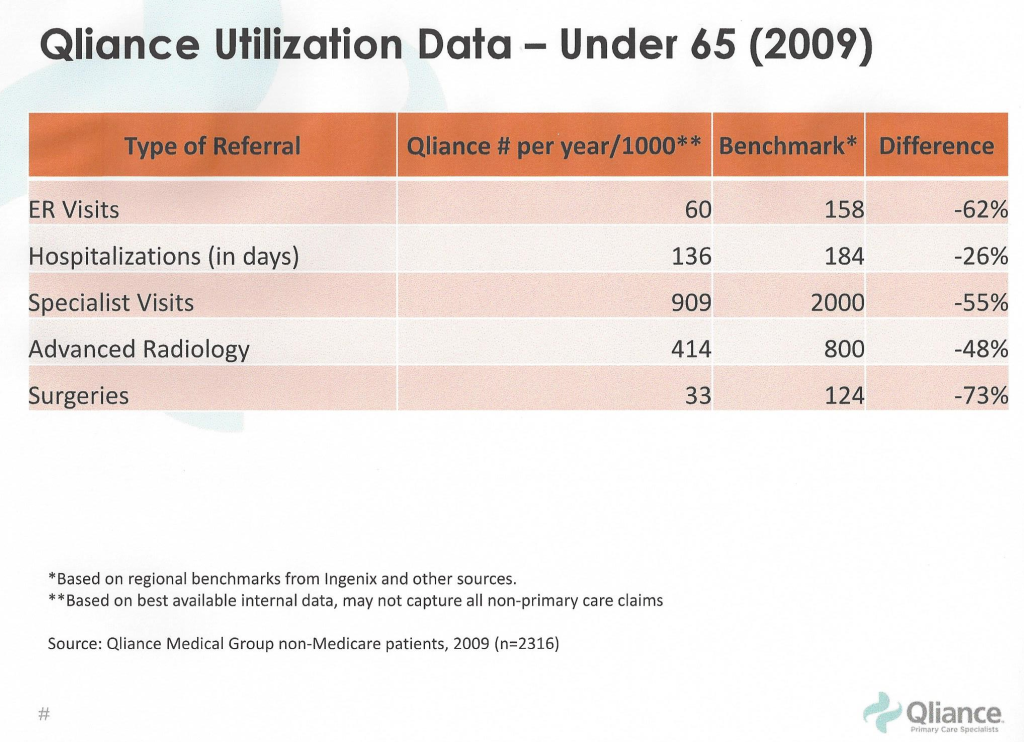
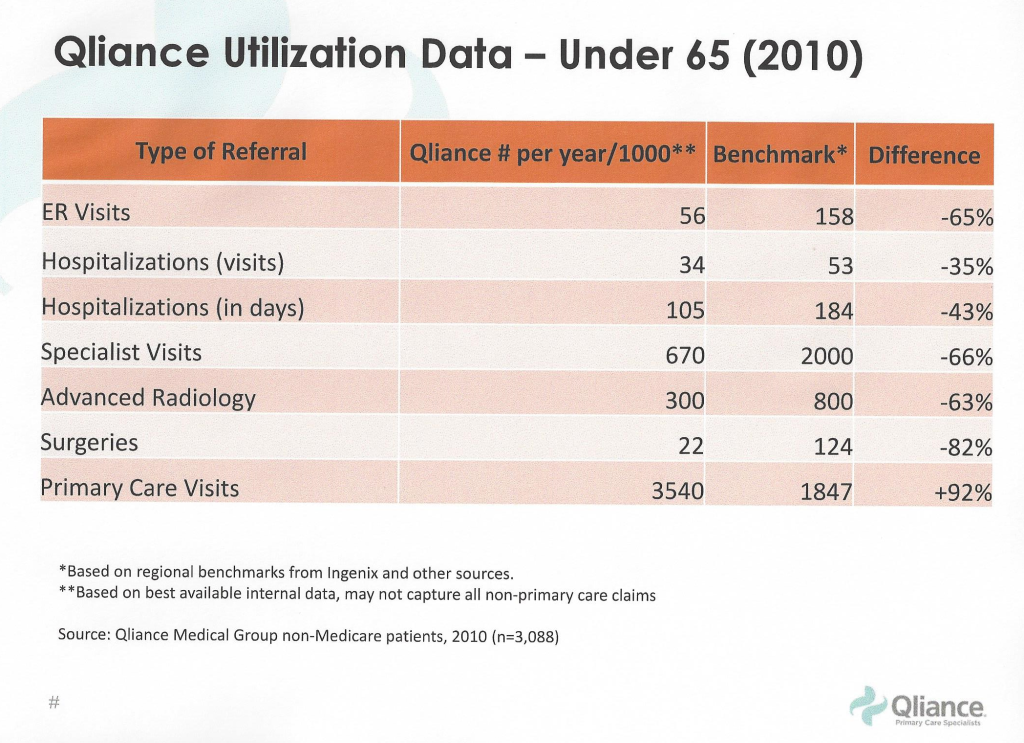
Second, even specialists are willing to reduce their fees when they are guaranteed payments in a more timely manner. Again, when we eliminate the insurance middleman, we significantly reduce the uncertainty and/or time it takes to pay for services. In reality, fees for sub-specialty visits, services, surgeries, etc. are set for insurance companies who routinely underpay by a significant amount, since they can negotiate much lower payments. Again, if we could eliminate the “insurance bureaucracy tax” by reducing administrative costs through the removal of the insurance middle man, specialists could charge patients much less for the actual services they provide.
The original article can be found here from The Direct Primary Care Journal
Open Enrollment: What To Do Next
For all of you who are in the enrollment period for employer-based insurance, including town employees, we can help answer your many questions. We offer free one hour consultations to help look over your insurance benefits. We also show you how Gold Direct Care can complement your insurance in a way which accomplishes two main goals:
1) Provide you with better access to primary care (AKA better quality care) with a doctor that is available to you when you need them. Appointments guaranteed within 24 hours and no insurance hassles.
2) Lower your cost. By combining our aged-based monthly fee with a lower premium/higher deductible plan we can get you to either break even for better value or, best case scenario, we can save you money all the while keeping you protected medically and financially.
We understand how complex insurance options can be. We are here to help you become a better consumer and navigate these complexities, so you and your family are protected; all the while getting the best value for their dollar. Please contact us for any inquires and to set up a time to talk at info@golddirectcare.com or 781-842-3961.
We also have knowledgeable insurance consultants as well whom we can direct you to if needed.
Here is an article with great examples if you would like to learn more: What Really Happens When You Cut The Red Tape
2015 Edition of “DPC Consumer/Patient Guide”
Direct Primary Care Journal is a great resource for news about Direct Primary Care.
They’ve just released the 2015 Edition of “DPC Consumer/Patient Guide.”
“At about 98+ pages, “The DPC Consumer Guide“ is widely used in physician offices. undergraduate and medical college classrooms, and corporate offices worldwide. More than a dozen of the new entries in the 2015 Edition are in the sections on FAQs About DPC, which include: The Difference Between Concierge Medicine and Direct Primary Care (DPC); How Does This Work With My Flex Spending Account, Medical Savings, HSA or HRA? and Does DPC pair well with insurance plans? and more.”

